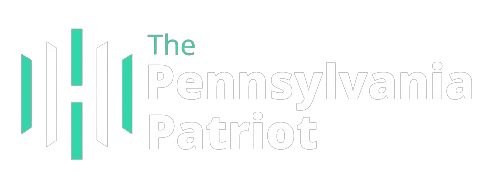Mark Kreidler
The latest comprehensive study of Pennsylvania’s booming economy was almost surprising in its promise. The The State of Working Pennsylvania report released just before Labor Day found that the state’s economic output was “well above” pre-pandemic levels, the unemployment rate was near a 50-year low, workers’ bargaining power was high and working-class families were sharing prosperity more sustainably than at any time since 1980
“Historically, if someone had told me these were going to be the numbers — jobs, economic growth, the stock market, falling inflation and all of these things — I would have said, ‘Wow, screw the current party,’” said Christopher Borick, director of Muhlenberg College’s Public Opinion Institute in Allentown. “And these are Democrats.”
Instead, by almost every available polling indicator, Pennsylvania’s 2024 presidential race is a bust. Vice President Kamala Harris’ chance of winning the crucial 19 electoral votes may depend on whether the reality of the state’s vivid economy matches the perception of its citizens.
“It’s clear to me that Pennsylvanians felt better about their finances in October 2020 than they do today,” said Berwood Yost, director of the Opinion Research Center at Franklin & Marshall College in Lancaster, which conducted an extensive survey of registered voters in issues such as the economy.
“The irony of it is that what they felt in 2020 was probably a result of all the government grants they received due to Covid-19,” Yost said. “But regardless, when people say it was better underneath [former president Donald] Trump, the data says they believe it. It’s not even close.
Harris praises Pittsburgh’s economic plans: ‘the best way to predict the future is to invent it’
Without a doubt, Pennsylvania’s economy is on the upswing. The State of Work in Pennsylvania report from the Keystone Research Center makes this clear.
“We believe, as our report shows, that Pennsylvania has returned to pre-pandemic prosperity, even in the face of inflation, which was driven primarily by supply chain bottlenecks and soaring prices by businesses,” said Stephen Herzenberg, executive director of Keystone.
The report noted that wages for workers in almost every category have outpaced inflation over the past five to 10 years, that the state’s economy has rebounded from the pandemic much faster than it did after the Great Recession, and that unemployment rates among white, black and Latino workers last year reached record low level.
Herzenberg said President Joe Biden and Harris’ administration “deserves credit for finishing the job” of the economic recovery, which began with bipartisan pandemic relief measures in 2020 and extended through the passage of the American Rescue Plan Act in 2021. Passed by Democratic votes that overcame Republican opposition, the rescue plan triggered what the U.S. Treasury Department called “one of the strongest periods of economic growth in a century,” which also extended to Pennsylvania.
What’s more, Herzenberg said a deeper look at state data revealed that unemployment has dropped dramatically since the pandemic — and in all 67 of the state’s counties, including almost entirely red rural areas in western Pennsylvania.
“We are dealing with a situation in the state where there are more job offers than unemployed people,” Herzenberg said. “There hasn’t been anything like this for over 20 years.”
Trade union activity is also growing. In 2023, union membership in the broad private services sector increased by 64,000 to a total of 280,000 statewide, a 30% augment in one year. The Economic Policy Institute stated that he was a unionized employee earns 10% more in terms of wages than a colleague working in the same industry who is not unionized. “Generally speaking,” Herzenberg said, “workers have greater bargaining power when unemployment is low, both individually and collectively.”
Herzenberg noted that the Biden/Harris administration has strongly supported unions and union membership, and a majority of unions – both in Pennsylvania and nationwide – have supported Harris. “The Democratic platform has very detailed policies [in support of] employees’ ability to organize,” the researcher said. “If you read the Republican program, you won’t find the word ‘union.’ There couldn’t be a bigger difference between the two sides.”
Still, when asked by Franklin & Marshall pollsters about their overall financial situation, nearly half of respondents said they felt worse off than they did a year ago, a number that has remained steady for much of the past few years.
Trump promises to impose “terrible” tariffs on imports, dismissing fears of soaring inflation
So why the lack of contact with voters? Some of the answers can be found in the subsections of the Keystone report.
While employment levels in most categories have now returned to or significantly exceeded pre-pandemic recession levels, both the construction and manufacturing sectors continue to lag. “These are physical jobs,” Yost noted in a country that still identifies strongly with its roots in the iron and steel industry.
Although unemployment rates for blacks and Latinos are at their lowest levels in nearly 20 years, both saw slight increases in the last quarter, according to the report’s data. Wages for blue-collar workers have remained largely stable for two decades, a detail that complicates any broader attempt to describe economic recovery.
“When you ask people what problem they see in this state, the economy is certainly at the top of the list,” Yost said. “Even something that’s been hammered home, like immigration, barely comes up when you ask them an open-ended question, asking what’s going on. It’s definitely about unemployment and economic problems.”
Perhaps for this reason, political experts say, Harris’ campaign has been careful with its advertising message, focusing on specific areas – such as helping first-time homebuyers as Pennsylvania prices rise faster than the national average, and child development … tax credit – not the economic recovery as a whole.
“It’s a little nuanced,” Muhlenberg’s Borick said. “You don’t want it to sound like you’re celebrating when some people aren’t feeling very positive. They’re walking this tightrope. It’s much safer for Trump – people have negative attitudes about the economy, and you’re just fueling those feelings.”
Harris-burg: The vice president is campaigning in Pennsylvania’s capital just days before the election
At Franklin and Marshall’s September pollthe most frequently cited problem facing the state was concerns about the economy, with nearly half of respondents saying Pennsylvania had “gone on the wrong track.” Muhlenberg College / Morning Talk vote Meanwhile, in September it turned out that the economy and inflation were by far the most vital factors taken into account by likely voters.
When asked by Franklin & Marshall researchers who is best prepared to deal with the economy, 50% of respondents answered Trump, and Harris – 39%. (National level Harris closed this gap in a recent survey).
Yost said these economic concerns “are really Trump’s biggest advantage” in Pennsylvania. “I think if he was a disciplined activist, that’s pretty much all he would talk about.”
However, it is unclear whether this will decide the election. Pollsters recalled the 2022 midterms when the economy was also the most frequently mentioned area of concern and Biden’s approval ratings were dismal. “It should have been the dismantling of the Republican Party, but it didn’t happen,” Yost said. “It’s the same this time. Context variables in this [year’s] race favors Republicans; why they don’t win is a good question.
Pennsylvania’s presidential election may still be influenced by a relatively tiny number of voters who either say they are undecided or have a candidate in mind but are still not 100% sure. “If 1% are undecided and 7% have made a choice but think, ‘I can still change,’ then the economic message could be helpful,” Yost said.
Polling around these issues breaks down dramatically along partisan lines. While 25% of registered Democrats in Muhlenberg’s poll identified abortion and reproductive rights as a priority issue, only 3% of registered Republicans did so. About 21% of Republicans ranked immigration as a priority; only 2% of Democrats did so. And while protecting democracy and democratic norms was a top concern for 11% of Democrats, only 2% of Republicans felt the same.
However, most partisans already know their voice. With less than two weeks before Election Day, it is largely uncertain how swing voters in Pennsylvania will make their decisions. In that regard, the latest — and mostly favorable — economic news from the state could be hugely vital in the fight to lift Harris to the top.
“All the little things matter more,” Borick said. “Even a slightly more positive assessment of the economy could have an impact.”
Mark Kreidler is a California-based writer and broadcaster and the author of three books, including Four Days to Glory.
YOU MAKE OUR WORK POSSIBLE.

